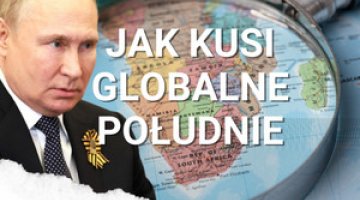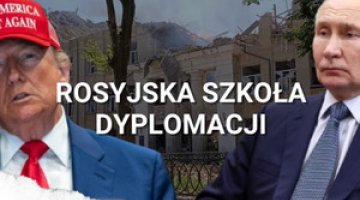The next stage of integration in the post-Soviet area
On 18 November in Moscow, the presidents of Russia, Belarus and Kazakhstan – Dmitri Medvedev, Alyaksandr Lukashenka and Nursultan Nazarbayev – signed documents designed to lead to the creation of a Eurasian Economic Union (EAEU). The announcement of the three countries’ intention is intended to give the impression that significant progress is being made in the integration processes in the post-Soviet area, which Russia wants to use for internal purposes in its election campaign, as well as to shape its image as a great power for its international partners. Also, Belarus and Kazakhstan want to use the announcement of the EAEU’s creation for their own political purposes. The new integration project, however, is also intended to strengthen the real economic ties within the CIS. It is part of Russia's strategy to rebuild its influence in the region. Kazakhstan sees the project as an opportunity to increase its attractiveness to investors, and as a form of protecting its market against Chinese expansion. For Belarus, this move is primarily an attempt to seek support in the face of the economic crisis. However, the fulfilment of the EAEU’s plan – a deep level of integration between these countries, with their different legal and economic systems, different levels of economic development, different ties with other partners, and their often conflicting economic interests – is unlikely.
The essence of the agreements
Three documents were signed in Moscow: a Declaration on Eurasian economic integration, which announced the creation in 2015 of the Eurasian Economic Union; an agreement on a Eurasian Economic Commission, establishing a coordinating body to integrate the three countries; and the Eurasian Economic Commission’s Regulations. The proclamation of the Eurasian Economic Union is another step in the integration of Russia, Belarus and Kazakhstan, which have operated the Customs Union since July 2010, and which are expected to operate within a Common Economic Space (CES) from 1 January 2012. The declaration of its creation, together with a range of agreements on its principles of operation, was signed on 9 December 2010 by the three countries’ presidents (for more, see ‘The Common Economic Space: the next stage of integration around Russia’, CES Bulletin #159, 15 December 2010). This latest declaration implies that the Common Economic Space will be just a preparatory step towards the creation of a Eurasian Economic Union in 2015. From 1 January 2012, the integration process within the CES area will be coordinated by the Eurasian Economic Commission – a permanent supranational body, consisting of a council (composed of the deputy prime ministers of the three countries) and an executive committee (which will consist of ministers or deputy ministers from the signatory countries’ economic ministries). The Commission’s decisions will be taken by consensus. The integration processes will be extended to all spheres of the economy (from energy, through transport, to agriculture and climate policy) on the model of the European Union. However, these ambitious plans for integration have not yet been accompanied by any specific timetable for action. Achieving the desired level of integration, allowing the creation of the Eurasian Economic Union within three years, seems unlikely. Yet it should be noted that the EAEU is to be based on countries that are linked by real interests and economic ties, and which have managed to create a truly functioning the Customs Union; this increases the likelihood that the project will be at least partially implemented.
Russia’s immediate interests
The announcement of a new stage of integration in the post-Soviet area, on the eve of the twentieth anniversary of the USSR’s collapse, has great political significance for Russia, both in terms of building up its image in the international arena, and in the internal dimension, as evidence of the government’s effectiveness.
The progress of integration as announced is to serve as a contrast to the economic and political crisis in the European Union. Russia wants to demonstrate that it remains a centre of gravity for the CIS countries, and is able to take the initiative in the post-Soviet area. Russia is also counting on showing that it is an independent player in the international arena, and is able to build up its own regional group, including in the context of integration processes in East Asia (the EAEU proclamation was made the day before the East Asian Summit, a regional forum which the US and Russia joined in 2011).
By announcing the creation of a new integration structure, Moscow also wants to take advantage of the ongoing election campaigns for parliament and the presidency, which will soon formally begin. Russian society is still relatively nostalgic for the Soviet Union, so the reintegration initiative has met with great support from the public.
Russia’s integration strategy
The agreements signed in Moscow are a continuation of Russia’s earlier integration activities, which date from the collapse of the USSR. In 1993, it signed the first agreement on economic union together with seven other CIS countries, although like the subsequent integration structures, this initiative remained on paper (see Appendix). This was largely because the structures for integration in the post-Soviet area were, above all, created by Moscow for propaganda reasons; whereas Russia’s real influence in the region was based on the CIS countries’ economic dependence on it. However since 2009, Russia has raised its game. At that time, Prime Minister Vladimir Putin announced the creation of the Customs Union with Russia, Belarus and Kazakhstan, which came into existence in July 2010. Russia now seems to be genuinely interested in the creation of a new, functional structure, and is readier than ever before to bear the costs of integration. This is of particular importance for the Kremlin in the context of the growing influence of China on the one hand, and the pro-EU orientation of certain Western CIS countries (Ukraine and Moldova, and in the longer term Belarus) on the other. The EAEU initiative is, among other things, a reaction to China’s proposal to create a free-trade zone within the Shanghai Cooperation Organisation. The Eurasian Union is intended to be open to all countries in the region. For now, Tajikistan and Kyrgyzstan have declared a desire to join the Customs Union; meanwhile, Russia is putting pressure on Ukraine to join.
The objectives of Belarus and Kazakhstan
By agreeing to participate in the economic union which Moscow has proposed, Belarus’s President Alyaksandr Lukashenka wants to demonstrate that he is not completely isolated internationally, despite the re-freezing of relations with the West. He is also using the EAEU to show that during a time of deep crisis in Belarus, he can keep up relations with Russia, which is his country’s main political and economic partner. At the same time, as he lacks any room for manoeuvre in the international arena, he has realised that only by accepting the integration initiative will he obtain the loans from Russia which are necessary to sustain the Belarusian economy, which has plunged into crisis. Minsk is also aiming to obtain a lower price for Russian gas in 2012, and to maintain its preferential access to the Russian market.
Kazakhstan’s desire for economic integration with the Russian Federation and Belarus derives from its strategic objectives. First, it sees the plan as a possible defence against China’s economic expansion, which will be subjected to the EAEU’s legal and technical requirements. Secondly, cooperation with Russia is of strategic importance for Astana, and Kazakhstan cannot (and never has) indulged in any explicit opposition to Russian policy. At this present moment, Kazakhstan is counting on the influx of foreign investments which will result from a common market, as well as a better investment climate than currently exists in Russia. The government of Kazakhstan is presenting integration with Russia as a stimulus for domestic producers to improve the quality of their production, so they will be able to compete with Russian goods.
Summary
The statement announcing the creation of the Eurasian Economic Union was very general in nature. Considering the changeability of the legal solutions, the differences in the three signatories’ economic development, the partial divergence of their interests, and the scale and dynamics of their economic links with other partners (especially those of Kazakhstan with China), it would be unrealistic to expect the assumed level of integration to be achieved within the specified time. Meanwhile, Russia’s desire to establish a truly functioning regional structure in the CIS, with its centre in Moscow, is a permanent trend, and will remain a priority of Russian policy.
Agata Wierzbowska-Miazga, with Kamil Kłysiński and Aleksandra Jarosiewicz
Appendix
Genesis of the Eurasian Economic Union
December 1991: The collapse of the USSR; the formation of the Commonwealth of Independent States
September 1993: eight CIS countries sign a treaty of economic union, providing for the gradual implementation of the stages of economic integration (these goals were never realised)
April 1994: the signing of an agreement establishing the CIS free trade zone (which did not enter into force)
January 1995: Russia and Belarus, and later Kazakhstan, sign an agreement on the creation of a customs union (Kyrgyzstan joined in 1996, and Tajikistan in 1999; they gradually created a free trade zone with many exemptions)
October 2000: participants of the customs union agree to create the Eurasian Economic Community (EAEC, which Uzbekistan joined in 2006)
September 2003: Russia, Ukraine, Belarus and Kazakhstan sign an agreement to establish the Common Economic Space (the planned documents were not adopted, due to Ukraine’s withdrawal from the project in 2005)
August 2006: Russia, Belarus and Kazakhstan declare the preparation of a legal basis for the customs union (which was confirmed by the agreement of October 2007, although no significant progress has been made since then)
June 2009: Prime Minister Putin announces an intensification of preparations to establish the Customs Union between Russia, Belarus and Kazakhstan in 2010
27 November 2009: the three countries sign some of the documents to establish a Customs Union (the implementation of the Customs Code was transferred from 1 January 2010 to 1 July 2010)
5 July 2010: Russia, Belarus and Kazakhstan sign a declaration that the Customs Code has come into force (forming the Customs Union)
9 December 2010: the three countries sign 17 major agreements to establish the Common Economic Space as of 1 January 2012
4 October 2011: in an article in the Izvestia newspaper, Russian Prime Minister Vladimir Putin presents his vision for creating a Eurasian Economic Union (over the next few days, articles in support of the plan are published by the presidents of Belarus, Alyaksandr Lukashenka and Kazakhstan, Nursultan Nazarbayev)
18 October 2011: eight CIS countries sign an Agreement on a free-trade zone, which involves the removal of trade barriers between the parties (this is now at the ratification stage)





